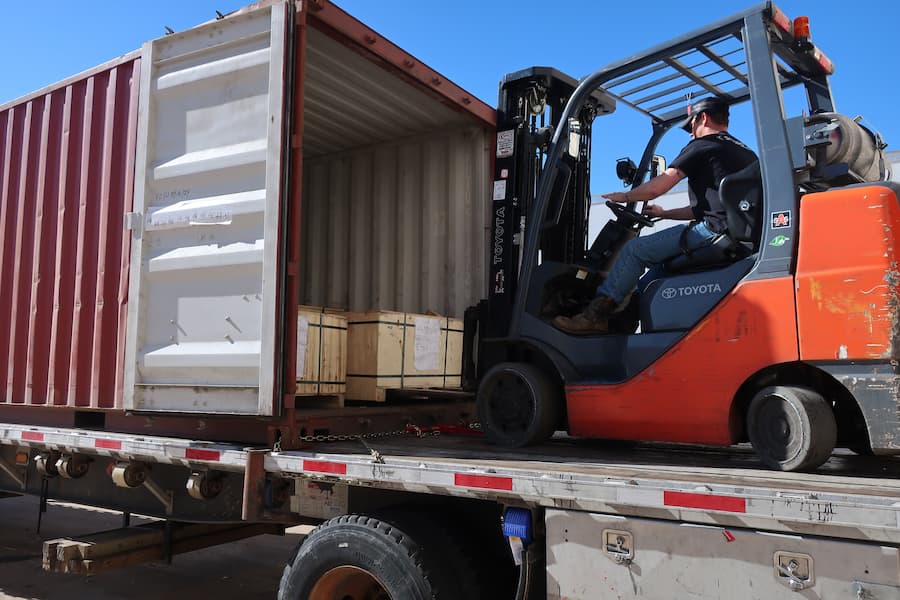“The U.S. doesn’t have enough truckers, and it’s starting to cause prices of about everything to rise.”
“Every single day is a battle to find drivers.”
“The U.S. trucking industry is struggling to find interested and qualified drivers to fill tens of thousands of jobs, despite the fact that the positions can offer yearly salaries over $100,000.”
The above quotes aren’t from trucking sites or transportation industry magazines. They’re from The Washington Post, USA Today, and Fox Business News. The truck driver shortage is big news, even to mainstream media.
Is the shortage really that bad? Bob Costello, chief economist of the American Trucking Associations says ‘yes, it is.’ He reports that the U.S. transportation industry was short 36,000 truck drivers in 2016 and expects that number to rise to over 63,000 by the end of this year.
“If things do not change, we could get to 175,000 short by 2026,” he says.”
What’s Caused the Crisis?
Some blame it on retiring drivers, on millennials’ disregard for driving careers, even on the recent Electronic Logging Devices (ELD) mandate. In reality, the shortage is the result of a perfect storm of circumstances—a storm that’s been brewing since the 1980s.
When trucking was deregulated in 1980, drivers’ salaries began to suffer. “Drivers were paid very well,” says Gordon Klemp, founder and president of the National Transportation Institute. “It was a very attractive career to go into for someone with aspirations to be a blue-collar worker and make a solid wage.” It may seem true today, too, but the numbers from the U.S. Department of Labor tell another story: If drivers’ wages had kept up with inflation after deregulation, a driver would make over $100,000 a year instead of the $53,000 an average driver earned in 2016.
Faced with lower earnings, post-deregulation drivers did whatever it took to deliver loads on time, which sometimes meant doctoring their Hours-of-Service logbooks. With the recent ELD mandate, there’s no way to falsify Hours of Service. Owner-operator Jeff Clark put it this way in a Facebook post: “With paper logs, we were able to work 16 hours a day, and make it look like we were working 13, in order to get paid for 10. Now, those extra 3 hours have been taken out of the supply chain.”
Though deregulation may have set the scene for the shortage, it’s certainly not the only cause. It’s true that many drivers are retiring, and that wave hasn’t crested yet. According to the U.S. Bureau of Labor and Statistics, the average age of a truck driver is 55 years old. Millennials are the obvious candidates for the jobs, but they’re not biting. Couple those two issues with the e-commerce boom, a healthy economy, and low unemployment, and the shortage begins to make sense. “We’re getting below 4% unemployment while manufacturing and construction are continuing to add jobs, and we compete against those industries for drivers,” says US Xpress CEO Eric Fuller.
But…
Some argue that the shortage is not necessarily the number of people willing to drive trucks. Jeff Clark finishes his Facebook post by saying, “… those extra 3 hours have been taken out of the supply chain. My friends, that is not a driver shortage. That is an efficiency shortage.”
And Todd Spencer, president of the Owner-Operator Independent Drivers Association, says, “Increasing the supply of people to be drivers will never address the problem because the problem is retention.” An American Trucking Associations report points in that direction, too, noting that the driver turnover rate for large truckloads was 94 percent in the first quarter of 2018—a 20 percent increase from the first quarter of 2017. The Owner-Operator Independent Drivers Association feels so strongly about the retention problem that it opposes potential legislation that would lower the minimum age for interstate commercial drivers, asking instead that Congress focus on the cause behind the “staggering driver turnover rate.”
What’s To Be Done?
Many companies are trying to do just that: identify and fix their retention issues. Higher pay is an obvious start, but it may not be enough. Brenny Transportation raised wages 15 percent this year—up to $80,000 a year—but still struggles to find drivers. Other companies are tackling the wage issue by restructuring how drivers are paid. Nussbaum Transportation pays door-to-door miles plus a guaranteed weekly minimum. Smokey Point Distributing is offering a guaranteed annual salary to drivers who hit a monthly mileage minimum. U.S. Xpress is giving its drivers as much as $50,000 in bonuses, and up to four weeks of paid vacation per year.
Paid time off is another perk companies are using to keep their employees. Nussbaum provides paid time off to its drivers based on their weekly minimum, and Boyd Brothers offer paid sick and vacation time, as well as 48 hours of home time guaranteed each week between Friday and Sunday.
Encouraging a sense of ownership may help retain employees, too, Daseke offers its drivers stock grants after one full quarter of service. “It sends a message to them,” says CEO Don Daseke, “…that they are really important to this company and we want them to be an owner, along with management.”
Other companies are investing in new equipment and technology. Several are exploring the use of autonomous trucks. Land O Lakes is partnering with FourKites to test a visibility system that would allow drivers to be paid when facing unavoidable delays. US Xpress now has an intranet that lets drivers communicate with each other, giving them some social interaction that can hard to find on the road. Corliss Resources, a concrete and aggregate company, purchased new trucks. “Our dealer [salesman], Rick Barry of Kenworth Northwest, managed to stuff another pusher axle under there and got us some more payload,” says Corliss’ safety coordinator Darrin Rousseau. “We can now haul an extra yard on a truck on a thousand loads a year. That’s anywhere from 500 to 1,000 yards a year without any additional work. Multiply that by six trucks and it really adds up.” The new trucks also have automatic transmissions, which has made Corliss’s drivers very happy.
Recruiting is Still a Priority
Even if companies can halt the turnovers, there’s still the fact that truck drivers are aging and will need to be replaced with younger drivers. Many companies are wooing millennials, but two of them have discovered specific strategies that work for them. Corliss discovered that veterans tend to be good, long-term employees. And Alabama Motor Express agrees that hiring the right people is the solution. The company cut its turnover in half by using an online pre-application behavioral assessment by JoBehaviors, which helped them identify applicants who were likely to view the driver job as a career, not just a stop-gap job.
We Can Help
We may not be able to put a stop to the driver shortage, but we can make sure that your shipment gets delivered on time. At Next Exit Logistics, we earn the trust of our clients with efficiency, transparency, and security. In addition, we understand how to handle freight services for unusual, oversize, or overweight shipments and are certified to arrange the shipment of hazardous materials. To learn more about our services, call Next Exit Logistics at 866-624-2661 or contact us via email.




